Spatial Computing: A Complete Guide
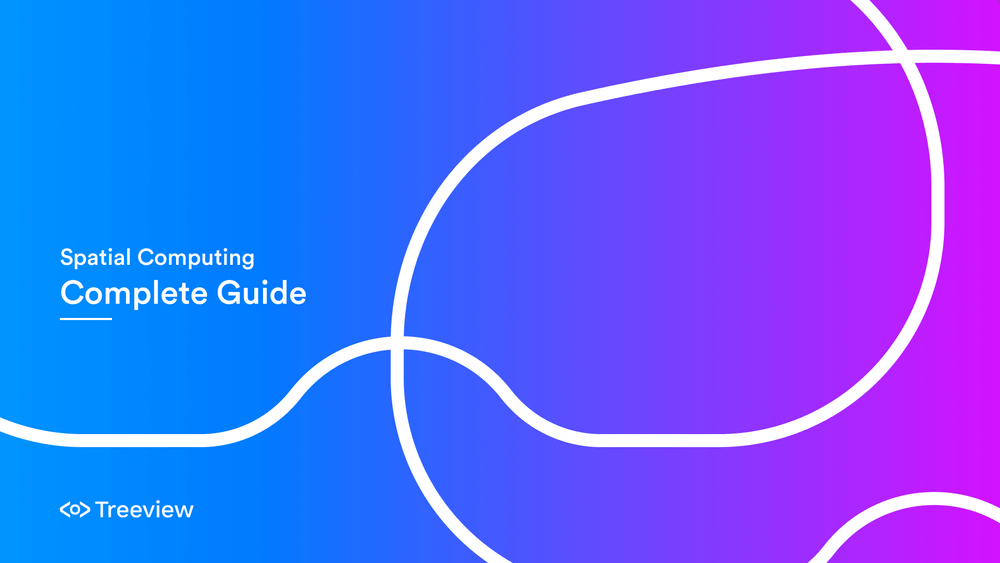
Spatial Computing refers to a set of technologies that enable humans to interact with computers in three-dimensional spaces. Technologies under this umbrella include Augmented Reality(AR) and Virtual Reality(VR).
This comprehensive guide will teach you everything you need to know about Spatial Computing. You’ll learn the differences between industry terms such as AR, VR, Mixed Reality (MR), Extended Reality (XR), Immersive Technologies, and the Metaverse. You’ll also go through various case studies to understand how this technology is adding value to multiple industries. Moreover, you’ll also learn how Spatial Computing works and familiarize yourself with the leading companies pioneering this space.
As this technology is rapidly shaping to be a pillar of the future of computing, growing your expertise will place you in an advantageous position in navigating this exciting future.
Read along or jump to the section that sparks your interest:
- What is Spatial Computing?
- What is the difference between Spatial Computing, AR, VR, MR and XR?
- How Does Spatial Computing Work?
- What is Spatial Computing Used For?
- Companies Investing in Spatial Computing.
- The Future of Spatial Computing.
Let’s get started 🚀
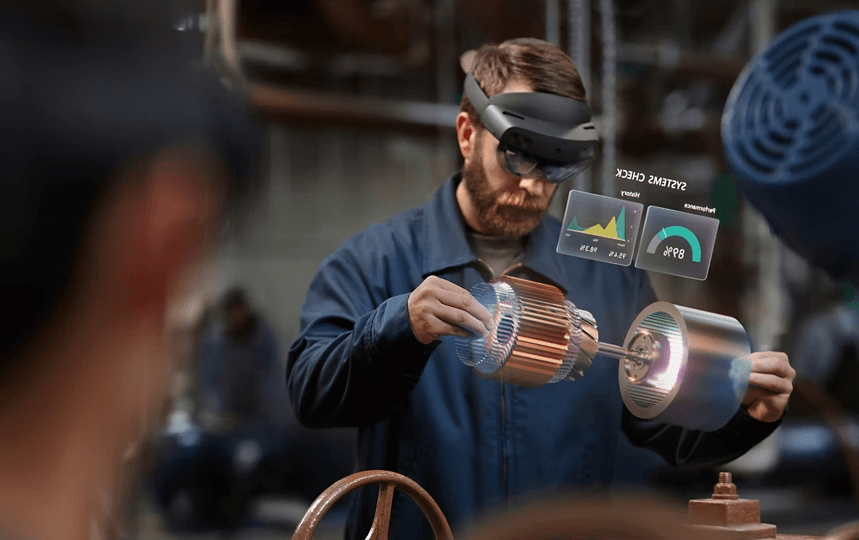
What is Spatial Computing?
Spatial Computing, also known as Immersive Technologies, Extended Reality (XR), or simply AR/VR, is a technology that uses physical space as a medium for interacting with digital content. Instead of confining digital experiences to two-dimensional screens, it brings a more immersive computer interface and a new way of interacting with technology.
Spatial Computing allows users to seamlessly blend digital content into their physical environment. In addition, it enables full immersion into digital realities, with interactions that emulate physical experiences.
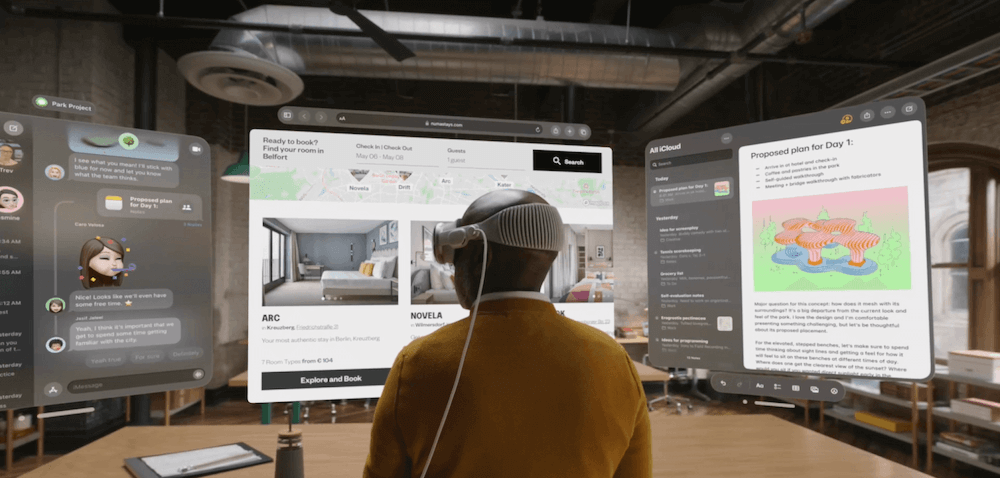
Coined by Simon Greenwold in 2003, the term ‘Spatial Computing’ has become a popular descriptor for AR/VR technologies. With the launch of Vision Pro, Apple has adopted 'Spatial Computing' as the preferred term for their Mixed Reality headset.

The Difference Between Spatial Computing, AR, VR, MR and XR
Modern Spatial Computing’s origin can be traced back to one of Kickstarter's greatest successes: Oculus Rift. Founder Palmer Luckey launched what is regarded as the first generation of contemporary Spatial Computing. In 2014, less than two years after it’s inception, Facebook acquired the company for $2 billion.
Around this time, big tech companies began to make serious investments in this field. While companies like Facebook and Google focused on Virtual Reality, others such as Apple and Microsoft focused their attention on Augmented Reality.
One challenge this technology sector faced was the lack of a universally accepted umbrella term that encompasses both Augmented Reality (AR) and Virtual Reality (VR). For comparison, in the tech sector of Artificial Intelligence, the term AI efficiently encompasses a wide range of technologies, including Machine Learning, Computer Vision and Natural Language processing.
Within the AR/VR sector, Virtual Reality (VR) and Augmented Reality (AR) are closely related technologies. However, prior to the introduction of the term Spatial Computing, there wasn't a universally adopted encompassing term that properly covered both fields apart from AR/VR, which sounds too technical for the everyday conversation.
So let’s dive into the main pillar technologies.
Virtual Reality Vs. Augmented Reality
Virtual Reality (VR) is a technology that fully immerses users in a digital, three-dimensional environment, enabling them to interact with their surroundings in a seemingly physical way.
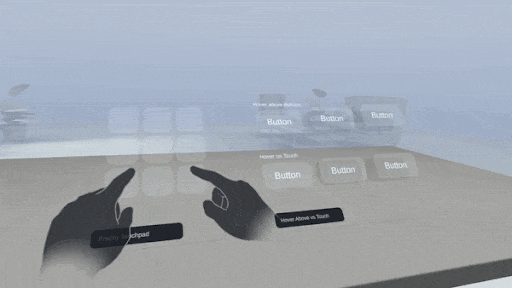
Augmented Reality (AR) is a technology that enhances our existing reality by overlaying digital content onto the physical world.
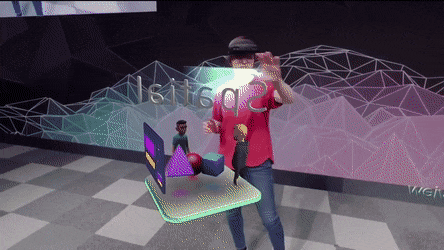
While Virtual Reality provides a fully immersive experience that isolates users from their physical environment, Augmented Reality amplifies the real world by integrating digital components into it, augmenting the user's real-world interactions.
What About Mixed Reality?
Mixed Reality (MR) is a technology that fuses physical and virtual worlds to create new environments where physical and digital objects coexist and interact in real-time.
Mixed Reality, often portrayed as a continuum between Augmented Reality and Virtual Reality, represents a blend of the physical and virtual worlds. It differentiates itself from simple augmented reality apps, such as overlaid data, by providing a more immersive interaction with virtual content in real-world settings. The term Mixed Reality thus encapsulates experiences that range from almost completely virtual, akin to Virtual Reality, to those that offer simple digital overlays akin to Augmented Reality.
Mixed Reality always maintains a connection with the physical world, incorporating elements of Augmented Reality, while also allowing for immersive experiences that can approach the levels of Virtual Reality.
What’s the difference between Spatial Computing, Extended Reality (XR) and Immersive Technologies?
None. The definitions have slight variants but all three terms can be used interchangeably to describe AR/VR technologies:
- Spatial Computing: A set of technologies that enable humans to interact with computers in three-dimensional spaces.
- Extended Reality (XR): The technical term that encompasses Virtual Reality (VR), Augmented Reality (AR), and Mixed Reality (MR).
- Immersive Technologies: A set of technologies that seamlessly integrate digital content with the physical environment to create an immersive experience.
For practical purposes, these three terms are synonyms to describe AR/VR technologies.
For more details see: Difference Between AR/VR and Spatial Computing
What Is the Metaverse, Exactly?
The term Metaverse, although coined in the 1992 sci-fi novel Snow Crash, was popularized by Facebook (Meta) during the company's rebranding in 2021. Today, the term Metaverse is used by different technology sectors to refer to independent concepts that don't necessarily share a direct relationship. These independent concepts are:
- Meta's Vision of the Immersive Internet: Meta’s primary vision of the future of technology presents the Metaverse as an abstract concept of AR/VR, envisioning a future where humans interact with the internet with a feeling of presence.
- NFT Virtual Land and Digital Assets: The Crypto and NFT industry adopted the Metaverse term to refer to decentralized virtual land projects like Other Side and The Sandbox. These projects have no connection to Spatial Computing.
- Multiplayer Video Games: Multiplayer gaming platforms like Roblox and Fortnite also use the term Metaverse to describe their virtual social worlds. These are essentially multiplayer video games, interacted with via standard 2D screens.
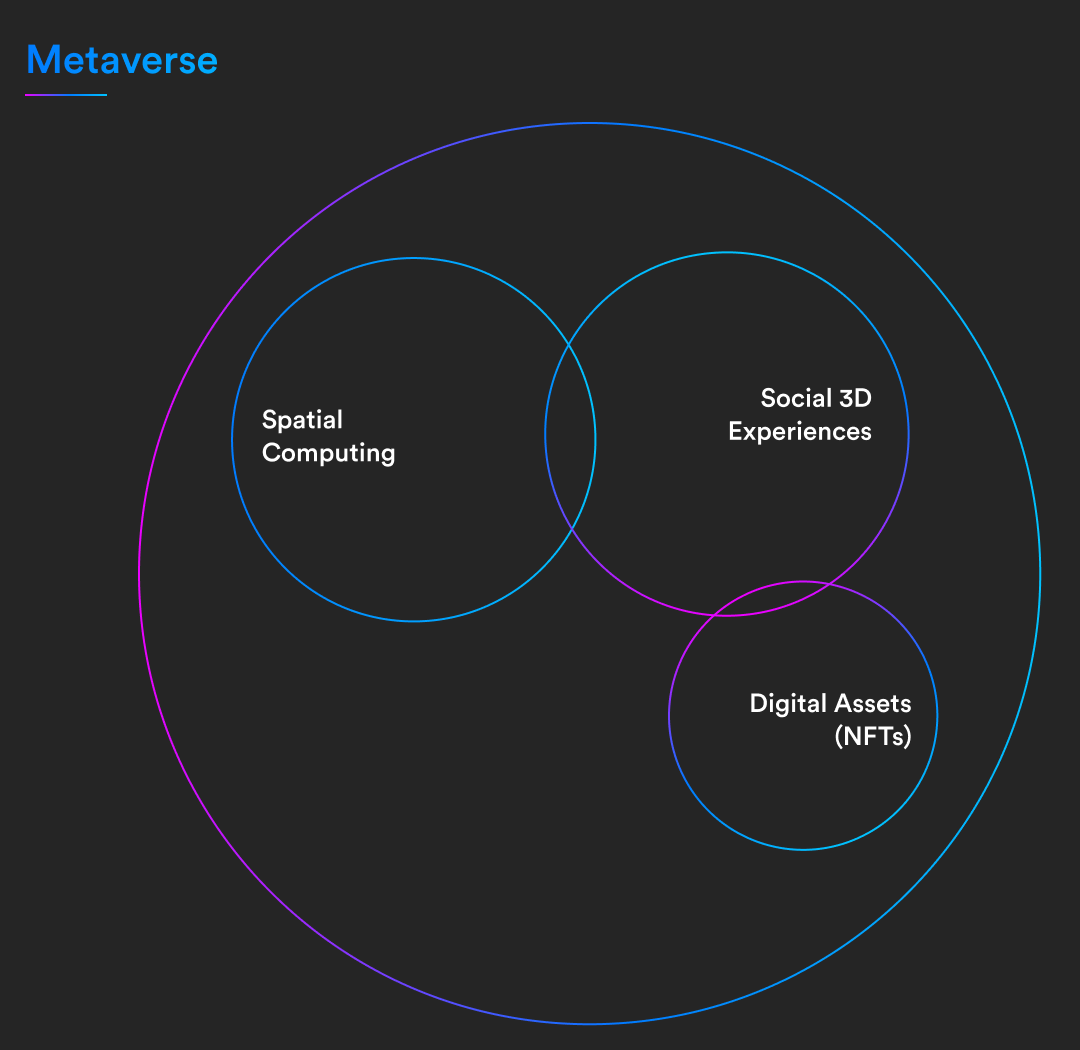
The term Metaverse, when used across these three independent technology sectors, leads to ambiguity and confusion. Some experts envision the future of technology as a convergence of different aspects of these separate visions. However, when discussing our main topic - Spatial Computing - it's better to steer clear of the term 'Metaverse'.
Spatial Computing Sounds Nice
With the launch of Vision Pro, Apple has adopted Spatial Computing as the umbrella term for AR/VR. Apple has a reputation and history of defining industry terms and standards.
Just as Apple popularized the term ‘App’ instead of software application, the tech giants’ influence and leadership in consumer technology give it the leverage to establish Spatial Computing as the official industry term for AR/VR technologies.
We've needed a new official industry term, and Spatial Computing does have a nice ring to it.

How Does Spatial Computing Work?
In recent years, we've seen remarkable advancements in Spatial Computing hardware capabilities, leading to more immersive and interactive digital experiences. This technology allows users to put on headsets and blend their physical environment with digital content like games, apps, and 3D simulation. This is achieved by using advanced display technology, cameras and sensors to scan the environment, different types of user inputs, and graphical rendering capabilities.
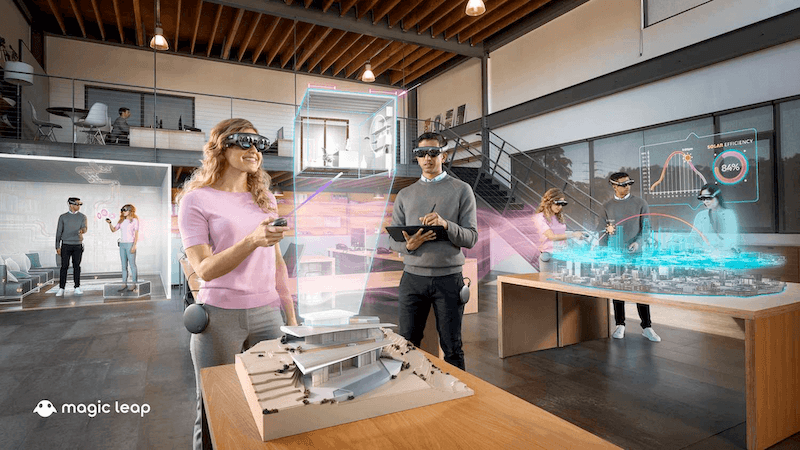
Let’s cover the key components that define how this technology works.
Displays
There are two primary display approaches that enable Spatial Computing to work: see-through glass technology and screen pass-through technology.
1. See-through glass technology, available in products like Magic Leap and Microsoft Hololens. This display technology lets users see their physical environment and 3D holograms through glass. These glasses are equipped with advanced technology that enables the device to render 3D holograms superimposed on the environment, creating a realistic overlay of digital content onto the users’ physical environment.
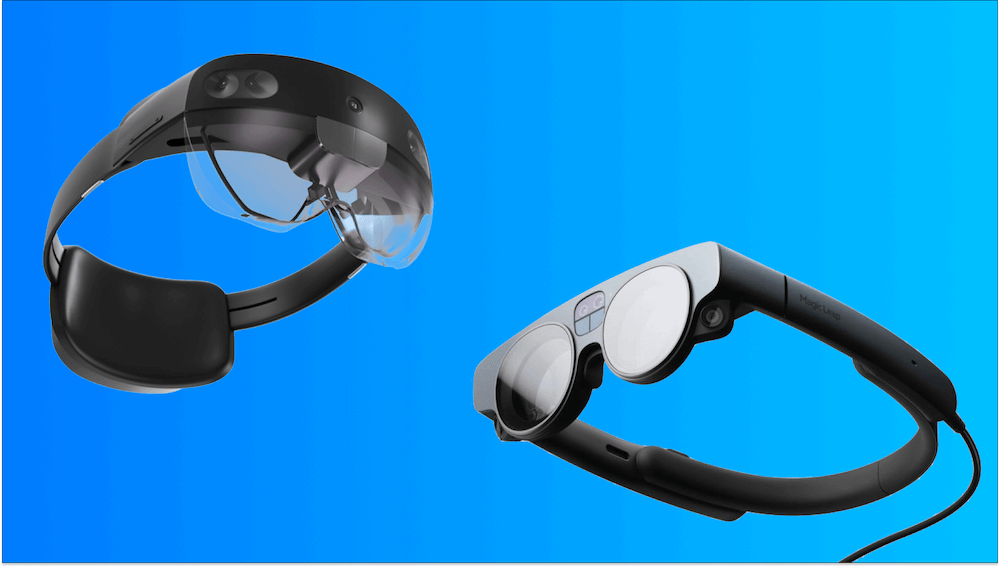
2. Screen pass-through technology, available in devices such as Apple Vision Pro and Meta Quest. This hardware approach presents the user's environment through a high-resolution camera and screen. With enough resolution, this method can achieve high realism, seamlessly integrating the real world with digital content.
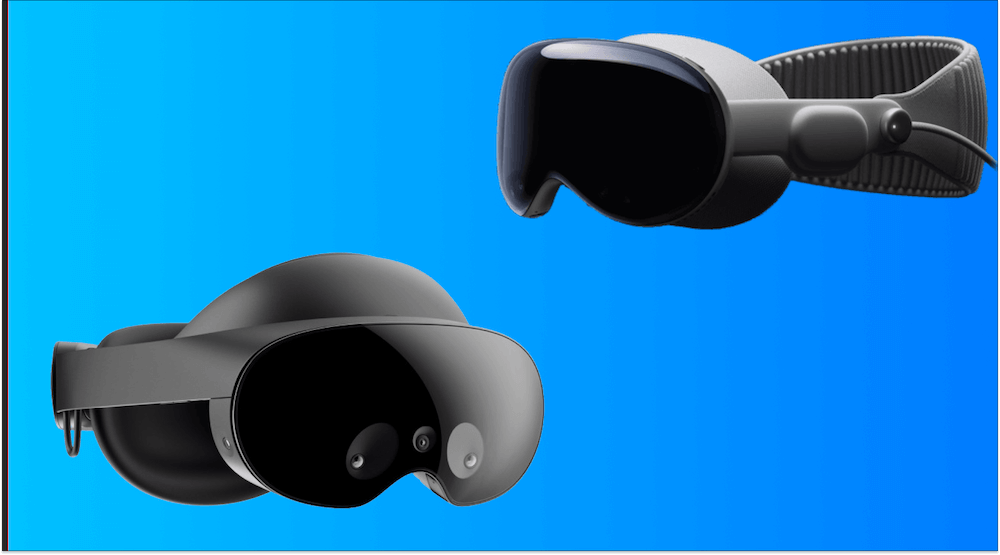
See-through glass technology offers more physical presence, but with less rendering field of view. It integrates better with physical objects and activities, offering a more realistic presence.
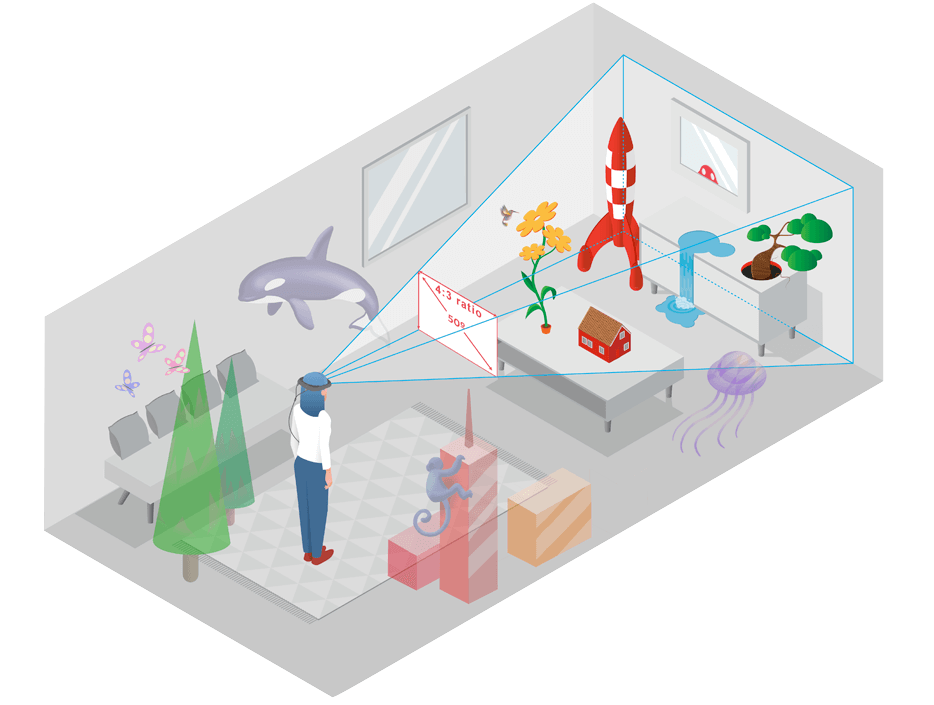
On the other hand, screen pass-through technology, provides a more immersive digital experience. It also enables fully virtual reality experiences, expanding the use-cases for these devices.
Each display technique has its strengths and weaknesses, and determining which one is "better" ultimately depends on the specific use-case.
Device Spatial Tracking
An integral feature of Spatial Computing is the ability of a device to understand its exact position within a given environment. This feature, also known as spatial awareness or device tracking, is typically achieved through camera computer vision or LiDAR technology. These sensors enable the devices to scan their surroundings in real-time, allowing to calculate their position in space.
Spatial tracking is accomplished by generating a point cloud of unique reference points. These points are continuously tracked, providing data that allows the device to establish its position based on its relationship to these reference points.
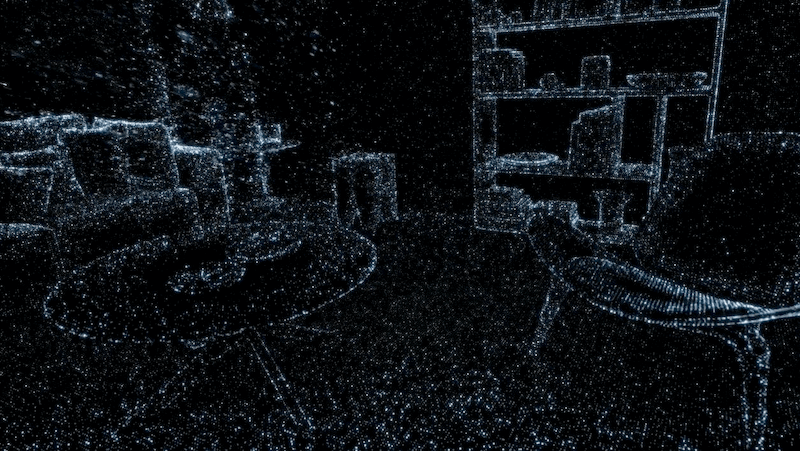
In terms of spatial positioning capability, spatial tracking can be categorized as either 3Dof (three degrees of freedom) or 6Dof (six degrees of freedom). A device with 3Dof can track only its rotation, while a device with 6Dof can track both its rotation and position.
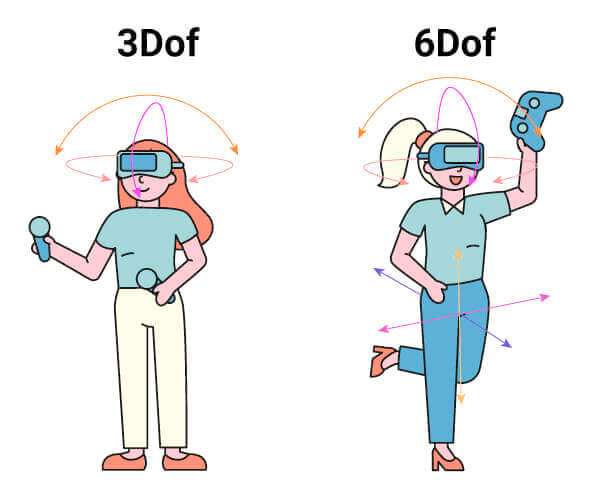
Having the device tracks its position with high precision enables spatial anchoring of virtual objects in precise locations. This ensures that the virtual object maintains its position in the virtual space, providing a seamless interaction between the user and the virtual environment.
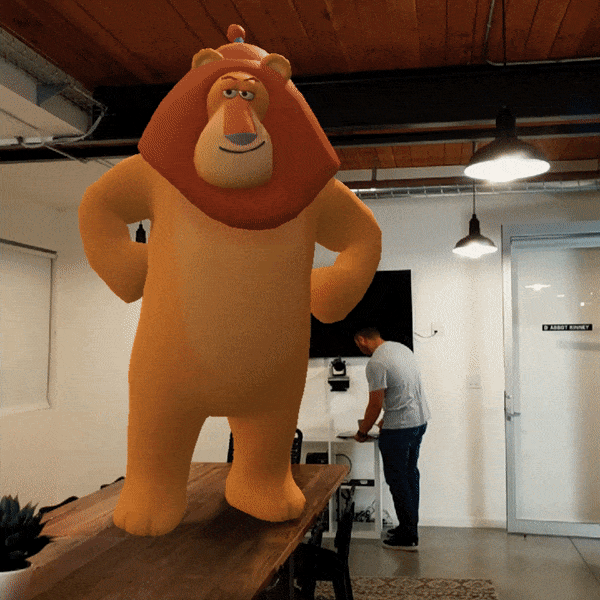
Interaction Mechanisms
To enable immersive and natural interactions in digital content, Spatial Computing leverages various input systems. These include: controller input, hand tracking input and eye tracking input.
Controller Input
Controllers simulate the physical presence of objects in our hands, such as a whiteboard marker or a light saber, offering a physical interface for interaction. Additionally, these controllers feature self-tracking capabilities that ensure precise virtual tracking.
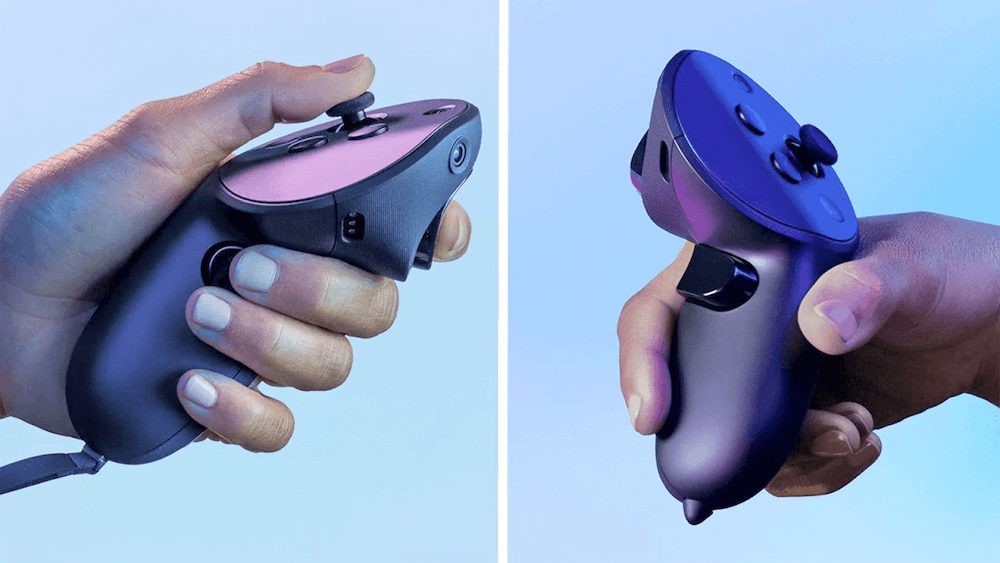
Hand Tracking Input
Hand tracking provides a natural way of interacting with the spatial computing environment. However, its main challenge lies in the lack of physical feedback when interacting with virtual objects.
Eye Tracking Input
Once considered a nice-to-have feature, eye tracking has now become a key input mechanism for devices like the Apple Vision Pro. Eye tracking allows the user's eyes to control the virtual cursor, creating a more intuitive interaction than traditional input devices.
3D Rendering Capabilities
The foundation of Spatial Computing lies in the ability of these devices to generate virtual objects within a three-dimensional space using real-time 3D rendering. This requires the devices to redraw all visible objects up to 60 times per second, which requires high computing power. As the industry pushes towards smaller and lighter devices, finding room for this computing power is a challenge. Spatial Computing developers need to continually optimize their visuals for achieving high levels of realism.
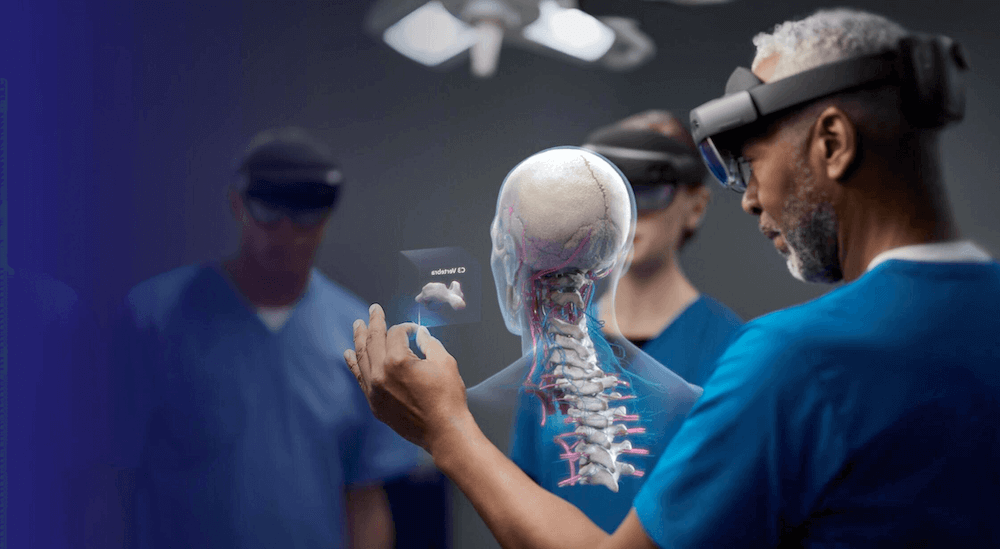
The rendering capacities of Spatial Computing devices extends from high-end gaming PCs to standalone headsets, each with distinct rendering capabilities. High-end PCVR systems, while offering superior graphics and rendering performance, typically require tethering via cables to a powerful gaming PC. On the other hand, standalone headsets integrate all processing components within the device itself, require no external systems of cables making the devices hassle-free.
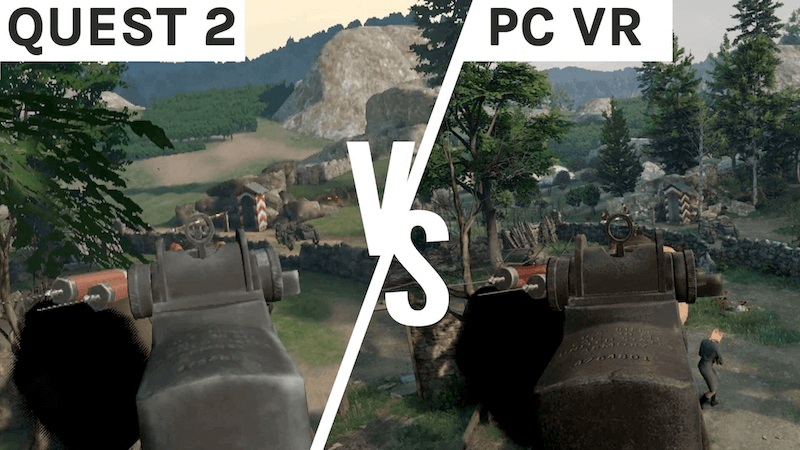
However, a new solution emerges with remote rendering, which allows the heavy processing of rendering to be processed in the cloud and then streamed to the device. This approach offers the potential to combine the high-end graphics of PCVR systems with the portability of standalone headsets. Prominent players offering solutions in this space include Nvidia with their Cloud XR solution, Microsoft with Azure Remote Rendering, and Holo-Light with ISAR SDK.
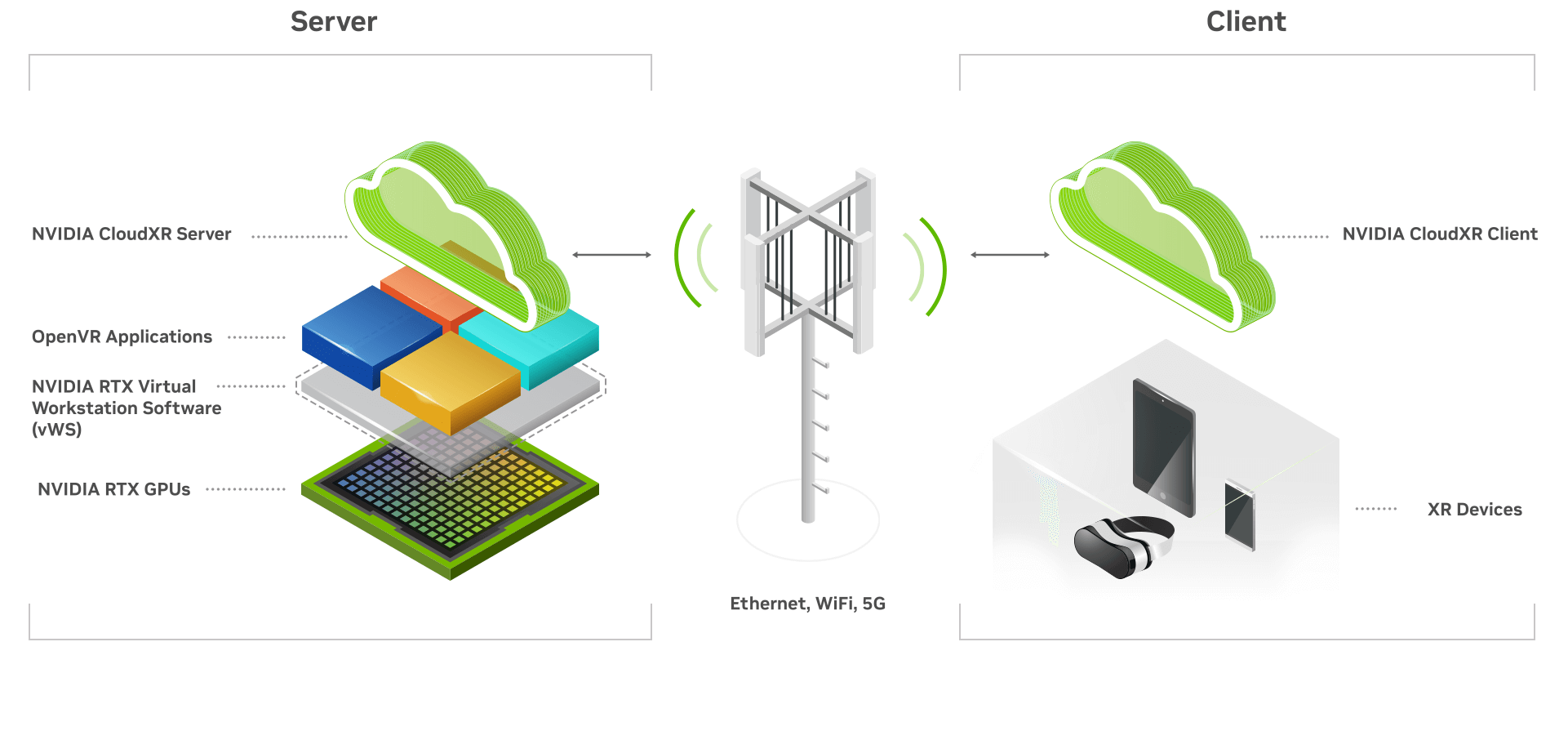
With higher Internet speeds and network technologies like 5G, remote rendering opens scalability in hardware rendering power for spatial computing devices, enabling more realistic immersive experiences.

What is Spatial Computing Used For?
Spatial Computing is being actively deployed across a broad spectrum of applications in various sectors and industries. Below is a compilation of real-world examples showcasing the use of Spatial Computing nowadays.
Remote Collaboration
Remote collaboration skyrocketed during the COVID-19 pandemic as companies rapidly adopted tools and best practices to enable remote work. Remote work opened doors to new lifestyles previously incompatible with traditional office life, such as digital nomadism and active parenting. However, it also made evident that video chat platforms like Zoom do not fully satisfy the need for creative and effective collaboration in a remote setting.
This is where Spatial Computing comes into play, providing a bridge between traditional video conferencing and fully present physical office interactions by introducing presence in the digital world.
At Treeview, we incorporate Spatial Computing tools to enrich our remote-first collaborative work. We view this technology as an additional layer in the remote communication tool-set ranging from: Email → Real-Time Chat → Voice Chat → Video Meetings → Immersive Meetings → Physical Meetups.
Here’s a glimpse of one of our Augmented Reality team meetings and after office meetup.
The following video is a snippet from one of our team's VR meetings. For remote teams, leveraging presence in the digital world helps to bridge the creative gap that 2D video simply can't fulfill.
Tools like Microsoft Mesh allows remote teams to collaborate on projects in a shared virtual space, interact with 3D models, and even manipulate objects in real-time, just as they would in a physical office environment.
Remote work is here to stay. By adopting Spatial Computing as part of their collaboration toolkit, organizations are enjoying the best of both worlds: the flexibility of remote work combined with the sense of presence and collaboration benefits previously exclusive to the traditional office environment.
Training
Industries are experiencing profound transformation through the deployment of virtual training. Studies conducted within multiple industries reveal exceptional performance improvements in virtual training compared to traditional training methodologies.
For instance, did you know that in a pre-employment training study, 100% of the participants who trained in VR secured the job, compared to 69% for non-VR training? Or that trainees using virtual environments for learning are 20% faster and 230% more successful than their peers? Industry results show that using VR training outperforms traditional methods in all categories: knowledge, skills, satisfaction, confidence, and performance time.
The training sector has greatly benefited from harnessing the power of spatial computing to enhance the learning experience, enabling more effective, efficient, and cost-effective results.
Here's how:
Immersive Learning: Spatial Computing offers an engaging and interactive learning experience, promoting active learning and better retention. This is achieved by creating real-life simulations that users can learn by doing, which introduces better learning outcomes than learning through theory. Training by doing also provides a more engaging training experience, catering to various learning styles, such as visual, auditory, and kinesthetic, thereby accommodating a broader range of learners than traditional methods.
Scalability: Traditional training methods can be costly, time-consuming, and resource-intensive. This includes assembling training equipment, time from experts and physical locations to conduct training. In contrast, Spatial Computing provides a scalable solution for distributing training simulations. Once developed, these virtual simulations can be replicated and distributed to a large number of users across different geographical locations at little to no additional cost. This scalability not only saves resources but also ensures uniformity in training quality, irrespective of the learner's location or the number of learners involved.
Safety: Spatial Computing training allows learners to make mistakes without real-world repercussions, an essential feature for high-risk industries such as healthcare, aviation, and construction. For example, in the healthcare sector, trainee surgeons can practice complex surgical procedures in a virtual environment, honing their skills without risking patient health. Such training modules can be repeated multiple times until perfection, providing a safe space for learning and experimentation.
Realism: Spatial Computing can replicate scenarios too expensive, challenging, or dangerous to reproduce in reality. For instance, a VR fire safety training can be more impactful than a traditional lecture or video. It allows learners to practice their responses to a fire emergency, giving them firsthand experience of the situation and how they should effectively respond.
Tools like Microsoft's Hololens Guides can deploy Spatial Computing training, providing on-site, hands-on virtual guidance for employees. These virtual guides supply information and detailed instructions on performing real-world tasks. This fusion of digital and physical spaces empowers employees with a more immersive and interactive learning experience, elevating their skill set and efficiency.
See how Toyota effectively deploys Spatial Computing to bring about iterative enhancements on the factory line while also fostering the continuous development of their workforce. This strategic implementation underlines the innovative approach of leveraging Spatial Computing to elevate operational efficiency and workforce skill levels, leading the future of industry practices.
Healthcare

Spatial Computing is adding high value to the healthcare industry in several ways and has seen high adoption and retention of this technology. One of the most promising applications of spatial computing in healthcare is in surgical training. The technology is used to create realistic simulations of surgical procedures, allowing surgeons to practice their skills in a safe and controlled environment. This can help to reduce the risk of errors and complications during real-world surgeries.
With the ability to overlay digital information and content on the physical world, Spatial Computing can also provide healthcare professionals with visualization capacities and hand-free access to critical information during surgery.
Another valuable use case for Spatial Computing in healthcare is the enhancement of patient-specific insights. This technology can deepen the communication of knowledge between patients and doctors, providing a more comprehensive understanding of health conditions.
Art
Spatial Computing has opened in a new medium for artists, providing a new canvas for idea exploration. This technology possesses unique characteristics, such as its ability to unlock unprecedented levels of empathy, allowing viewers to perceive the world as others do. Additionally, it offers full immersion into fully simulated 3D scenarios, enveloping the senses in dreamlike landscapes.
A few artists to follow in this space include:
Lucas Rizzotto
Lucas is an award-winning creator, futurist, and self-proclaimed "mad scientist," exploring concepts surrounding human emotions, social connection, and new forms of expression through emerging technologies.
From constructing a time machine to creating social experiences where strangers anonymously share their deepest feelings, Lucas has been pushing the boundaries of spatial computing. His work has established him as a leading artist in the industry, deepening our understanding of human nature through new technological mediums.
Here’s a video of us playing around with a mixed-reality instrument designed and created by Lucas.
Maxim Zhestkov
Maxim is a renowned digital artist with exhibitions around the world. Originally an architect, or in his words, a "Frustrated Architect," his love for spatial communication has been constrained by the physical and economical limitations of the architecture industry.
With Virtual Reality, Maxim discovered a medium where he could explore space as an artistic canvas without any limitations inherent in the physical world.
His 'Modules' Virtual Reality exhibition, available to the public, offers deep philosophical insights into the capabilities of this medium. It exemplifies how certain concepts and ideas can only be communicated in fully immersive experiences.
Universal Everything
Universal Everything is a collective of digital artists using emerging technologies as their canvas. The group has created numerous exhibitions and projects, including Emergence, an open-world Virtual Reality art experience exploring human behavior, individuality, and collectivity.
Notes on Blindness
Notes on Blindness exemplifies the storytelling power of Spatial Computing. Based on writer John Hull's recordings about losing his sight, this Virtual Reality experience immerses the viewer in a post-vision world. The experience showcases how Virtual Reality excels as a new medium for communicating empathy.
The experience is an emotional roller coaster that transports the user into the world of blindness.
Fitness
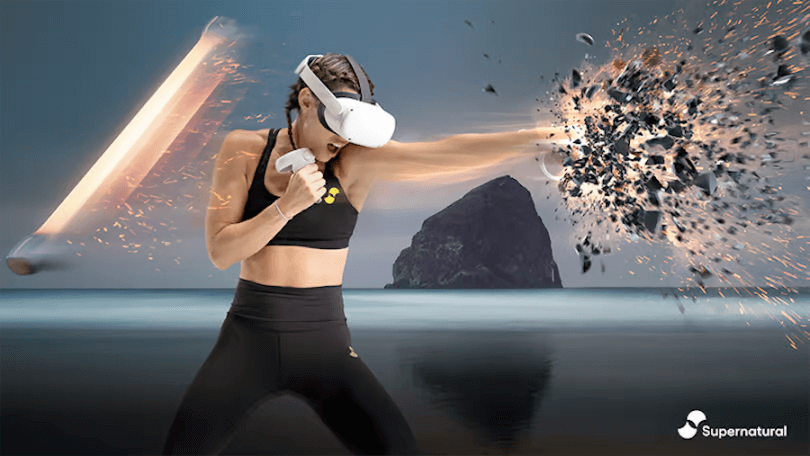
In recent years, there has been a high growth in innovation in fitness, reflecting the global surge in health and wellness consciousness. Key challenges in this sector involve minimizing user friction, fostering engagement through convenient solutions and encouraging routine workout practices through gamification elements.
Spatial Computing entrepreneurs have worked to address these needs, giving rise to numerous startups aiming to revolutionize fitness. By re-imagining the conventional concept of physical exercise, these startups have launched digital products with immersive, entertaining, and effective VR workout experiences. This innovative approach is not just transforming how fitness is perceived but also shaping how it is interacted with, offering exciting potential for the future of personal health and wellness.
The VR Institute of Health and Exercise, has conducted studies providing comparisons between popular VR fitness platforms and traditional workouts. Platforms such as Supernatural, Thrill of the Fight and FitXR have been compared with standard exercise routines like boxing, biking, and tennis.
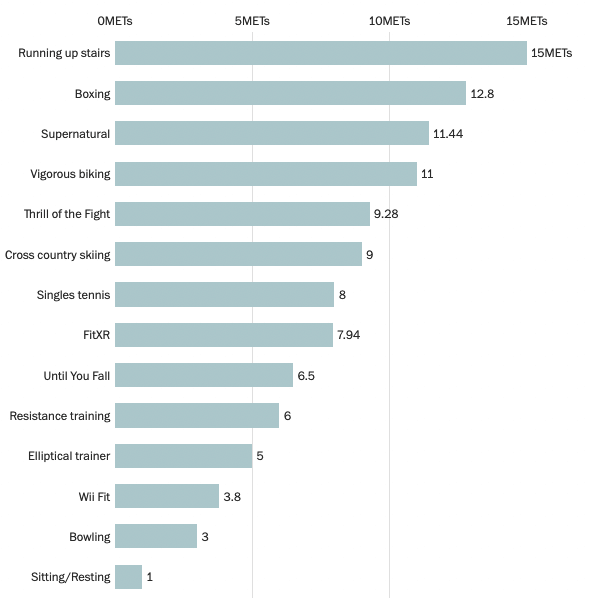
One particular success story highlights the potential of VR in fitness. In 2019, Meta acquired the creators of Supernatural, a VR fitness platform. Since the acquisition, Supernatural has flourished as one of Quest's flagship offerings for consumer fitness, exhibiting high user retention rates.
This success underscores the potential of VR in revolutionizing fitness, providing immersive, engaging, and convenient workout experiences.
As more users embrace innovation and adopt new technologies, use cases for VR in fitness and wellness will continue to broaden and gain popularity. The potential of VR extends beyond simply providing a novel workout experience - it holds the promise of transforming how we perceive exercise and wellness, making fitness more accessible, enjoyable, and ultimately, more beneficial for everyone.
Agriculture
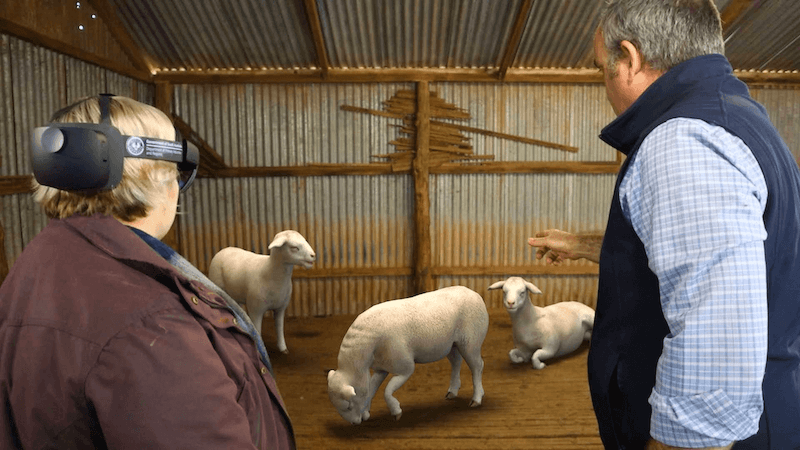
Contrary to its reputation as a technology laggard, the agriculture industry has seen significant innovation, especially with the application of Spatial Computing. This advanced technology is being used to address key challenges within the sector.
Bridging communication gaps between the agriculture sector and the public, who often lack an understanding of where our food comes from. Spatial computing thrives as a channel for empathy creating powerful storytelling to take users on journeys from the farm to the table.
Improving access to critical knowledge for agricultural professionals, such as identifying animal diseases. A recent industry tool launched by the Department of Primary Industries and Regions South Australia, enables farmers to be educated on identifying emergency animal diseases.
The talent drought, particularly amongst younger generations. Spatial Computing provides industry exploration tools that enable potential workers in the industry to explore the agriculture industry and job opportunities.
Enhancing productivity tools using Spatial Computing to bring the real and digital world together, allowing producers to visualize their data, stock, tasks and equipment procedures using Spatial Computing.
Industry-leading solutions providers Think.Digital are at the forefront of creating innovative spatial solutions for the agriculture sector. The company is a leader in developing AR/VR solutions for government agencies and large industry corporations in Australia’s largest industry, agriculture.
Remote Assistance
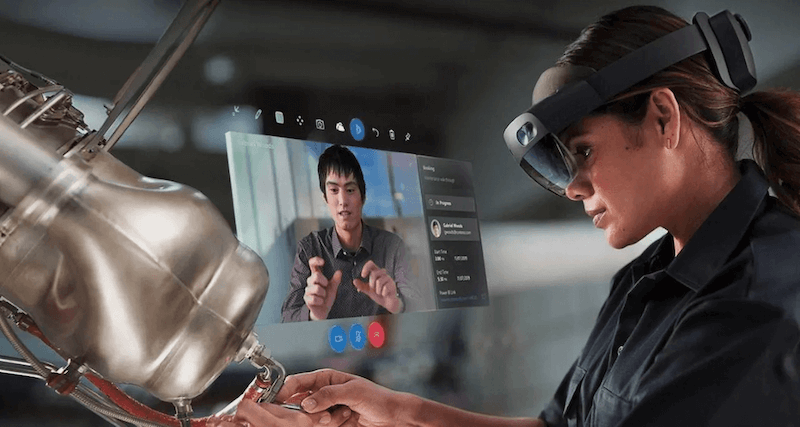
Spatial Computing introduces a new era in telepresence, transforming remote assistance by empowering technicians such as mechanics, electricians or IT specialists to literally see through the eyes of their on-site counterparts. The introduction of this technology is unlocking key applications, such as remote technical assistance, where experts can gain a first-hand access from those on-site.
The applications of spatial computing for remote assistance offer several key advantages:
- Enhanced efficiency of service technicians.
- Significantly decreased service-related travel costs.
- High scalability of technician services.
- Swift resolution of issues.
- Improved response rates and response times.
Mercedes Benz is a prime example of an organization unlocking the benefits of Spatial Computing. The company uses Microsoft HoloLens 2 for remote assistance, delivering an industry-leading customer experience in service. This approach allows them to scale the deployment of their top experts to assist dealerships globally. As a result, service technician efficiency is improved, problem resolution time is reduced, and there's a decrease in the cost and environmental impact of service-related travel.
Ecolab - a global leader in water, hygiene, and energy technologies and services - is also taking advantage of this technology. Their food safety solutions contribute to the safe production of over a quarter of the world's processed food and 44% of the global milk supply. With the help of augmented reality and remote collaboration technology, Ecolab is capable of virtually transporting its expertise on-site from thousands of miles away.
“That has really helped us continue to provide world-class service, without being on-site 100 percent of the time. It’s really changed the way we look at things and the way we attack our service programs now and moving forward in the future.”
Spatial computing's telepresence capabilities have revolutionized remote assistance. While the present focus is on facilitating human-to-human interactions, the horizon is even more compelling. In the near future, technicians could potentially control robotic avatars remotely to perform tasks, signaling a leap towards unprecedented efficiency and convenience.
Gaming
Much like the adoption of computing in the 80s, gaming has been at the forefront of technological evolution. Spatial Computing now provides game designers with a new medium to unlock new levels of entertainment and fun.
In 2022 alone, the virtual reality game market surpassed $1.8 billion in revenue, according to a report from analyst firm Newzoo. Projections suggest that this figure could more than double to $3.2 billion by 2024. Notable success stories include:
As of October 2022, Beat Saber had generated over $255 million in lifetime sales. Following its enormous success, the studio behind the game was acquired by Meta, and it is now part of Oculus Studios.
Pokemon GO
The Augmented Reality phenomenon, Pokémon GO, which launched in 2016, accumulated over $5 Billion in revenue within five years. This massive hit has paved the way for a new genre that merges spatial computing with geolocation, encouraging users to venture outdoors and combining the physical world with digital content.
Valve’s Half Life Alyx
Video game titan Valve has been a trailblazer in virtual reality since the release of the HTC Vive in 2016. In 2022, the company launched the highly ambitious AAA Virtual Reality video game: Half-Life Alyx.
Half-Life Alyx exhibits the ultimate of virtual reality experiences, created by a master game and storytelling company. Industry critics have hailed the game as a masterpiece, underscoring the power of the medium.
“The magic lies in being inside the world, being able to touch it, and interact with it, directly.”
The title is estimated to have sold over 3.5 million copies, generating sales of over $210 million, in addition to the estimated $100 million Valve Index Pro headsets sold bundled with the title.
The spatial computing gaming sector has emerged as one of the most lucrative in the industry over the past few years. With the launch of devices like the Sony Playstation VR2 and other consumer headsets in 2023, this upward trend shows no signs of slowing down.
Education
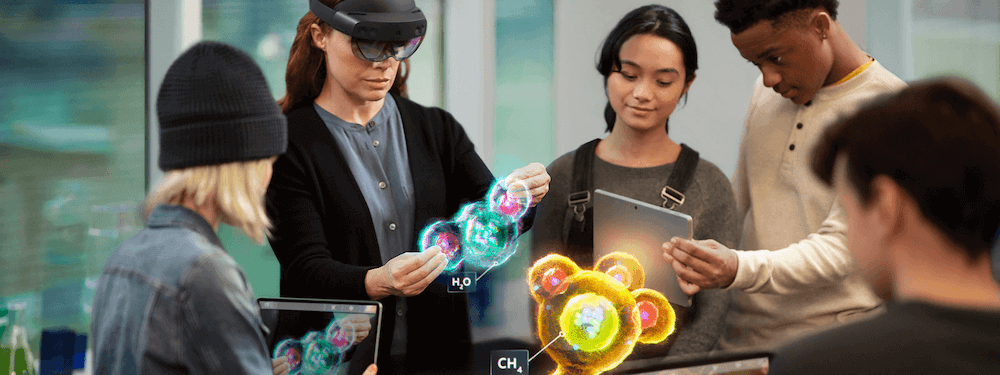
Since the introduction of David Kolb's Experiential Learning Model in 1984, the approach of learning through hands-on experiences has gained substantial popularity. Experiential learning, which emphasizes the process of learning through doing and reflecting, represents a significant shift from traditional, more passive forms of education.
Spatial computing has emerged as a game-changing tool in the realm of experiential learning, offering an immersive, interactive environment for learners. According to studies conducted by Microsoft, the use of spatial computing has led to a 22% improvement in test scores and a 35% increase in student engagement and retention when learning with immersive and 3D technologies. This indicates the transformative potential of spatial computing in fostering active learning and enhancing students' understanding.
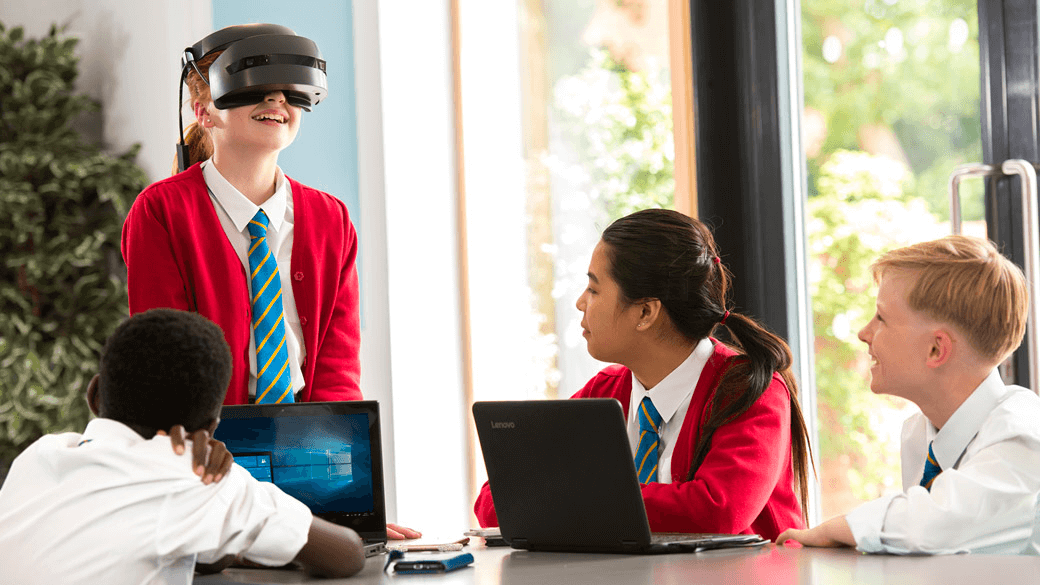
Spatial computing elevates the role of social and emotional learning by creating a more engaging and immersive educational experience. It allows students to experiment, explore, and learn in a dynamic, virtual environment, fostering a deeper understanding of complex concepts.
A few examples of spatial learning applied to education include:
Prisms Math
Prisms Math is a spatial learning platform for learning mathematics. By visualizing abstract mathematical concepts in a 3D environment, students can engage with the material in a more intuitive and enjoyable way.
Mondly
Mondly employs spatial computing to revolutionize language learning. Through immersive simulations and interactions, learners can practice new languages in realistic scenarios, enhancing their retention and fluency.
Galaxy Explorer
Galaxy Explorer leverages spatial computing to bring the cosmos into the classroom. The app allows students to explore the Milky Way galaxy in an immersive 3D environment, stimulating curiosity and interest in astronomy and astrophysics.
Meta’s vision of the future of education redefines educational experiences, enabling interactive and immersive learning environments that can adapt to individual learners' needs.
Industrial Design
Spatial computing is revolutionizing industrial design by providing designers and engineers an immersive, interactive platform. It brings a new dimension to design processes, enhancing visualization, collaboration, and prototyping.
Here are a few examples of spatial computing applied to industrial design:
Manufacturing
Airbus has embraced spatial computing in its design and manufacturing processes. Using technologies like Microsoft Hololens, designers and engineers at Airbus can visualize and interact with holographic aircraft parts, systems, and cabin layouts. This has enabled them to better understand the complexities of their designs and make more informed decisions, resulting in enhanced efficiency and accuracy in aircraft production.
Construction
Spatial computing is transforming the construction industry as well. Construction professionals can now visualize architectural designs in an immersive 3D environment before construction begins. This helps identify potential issues and make necessary changes, thereby reducing costly errors and delays. Spatial Computing enables workers to see 3D models overlaid on the physical environment, promoting better collaboration and efficiency on construction sites.
Interior Design
Spatial Computing provides an immersive, holographic experience, enabling interior designers to collaborate more effectively with their customers on how they design and build interior spaces. Designers can experiment with different layouts, styles, and colors, enhancing their creativity and reducing the risk of costly mistakes.
These case studies illustrate how spatial computing is pushing the boundaries of industrial design, providing new tools and possibilities for innovation and efficiency. As spatial computing technology continues to evolve, it promises to reshape the way we design and interact with our physical world. For more examples see our list of Top 9 Examples of Spatial Computing.

Companies Investing in Spatial Computing
All major tech companies have a strong presence in the industry and are all competing to define who will emerge as the key players in this arena that may become the future of computing after the smartphone generation.
The current key players in the industry are:
Apple
The grand debut of Apple's Vision Pro closely parallels the launches of the iPhone in 2007 and the Macintosh in 1984. Apple’s strategy has never been about gaining an early mover advantage but rather waiting, observing, and understanding a technology before launching the best product in its class.
The Macintosh wasn't the first personal computer, but it defined the standard and laid the foundation for the computer revolution that resulted in a computer in every home by the mid-90s.
Similarly, the iPhone wasn't the first smartphone on the market, but it defined the industry and the mobile technology generation that continues to this day.
The Apple Vision Pro is the most advanced spatial computing headset on the market, featuring the most cutting-edge hardware available. This device is not targeted for mass adoption, but it is positioned to be the first iPhone or the first Macintosh of the spatial computing revolution we will witness this decade.
In the words of Oculus Founder, Palmer Luckey:
They want to make the technology something everybody wants before making it something everybody can afford.
Meta
Meta made its official entry into the spatial computing industry with the acquisition of Oculus in 2014, and since then, it has emerged as the most dominant player in the field, with over 75% of the VR market share. In 2021, the company doubled down its commitment to spatial computing by rebranding from Facebook to Meta, signaling a roadmap shift from a social media centric model to a focus on becoming a Metaverse company.
Meta is strategically positioned to capitalized on the growth of spatial computing over the coming years. The Meta Quest 3 device, a fully integrated mixed reality system, is available at an affordable mass-market price of $499. This device offers mostly the same range of functionalities of the Vision Pro, but at a mere fraction of its cost. This price point and headset quality may be an ideal product-market fit for the new generation of first-time spatial computing users.
Meta and Mark Zuckerburg may not have the mass public opinion on their side like Apple does, but the Meta Quest 3 will be the clear winner in the upcoming first generation of fully spatial consumer-oriented devices.
Microsoft
Microsoft has been a significant player in the spatial computing space since the debut of the HoloLens 1 in 2016. In an attempt to distinguish the HoloLens 1's advanced capabilities from other Augmented Reality systems of that era, Microsoft has consistently championed the term “Mixed Reality” above Augmented Reality.
Microsoft launched the HoloLens 2 in 2019 and has since been a dominant player in the Mixed Reality space for enterprise, offering a suite of solutions that includes Dynamics 365 Remote Assist and Dynamics 356 Guides.
In addition, Microsoft has integrated its complete Teams and Microsoft 365 Suite software solutions into the Meta Quest ecosystem. By providing their software solutions to external hardware manufacturers, Microsoft has followed a strategy that has proven successful for them in the past.
As for the future, Microsoft's next generation of hardware remains unannounced. The company's strategy moving forward remains to be defined - whether they will continue to expand their Hololens line or choose to partner with other hardware providers, mirroring their approach with the Windows platform.
Magic Leap
Magic Leap made its debut as a highly secretive startup backed by prominent investors, including Google and Alibaba Group. In 2019, the company unveiled its first product, Magic Leap One, at a base price of $2,295. Despite its cutting-edge technology, the product initially struggled to find a solid footing in the market. This was largely due to the launch strategy, which positioned Magic Leap One - with its primarily gaming-focused content - at an enterprise-level price point, creating a significant challenge in identifying the target audience.
In 2020, the company announced a new CEO, Peggy Johnson, replacing its founder, Rony Abovitz. Under Peggy's leadership, the company has successfully shifted its focus to enterprise, culminating in the successful launch of Magic Leap 2, a product tailored specifically for the enterprise market.
Magic Leap currently secures an impressive portfolio of over 4,000 patents and leads the industry in glass display technology. While tech giants like Meta and Apple are targeting the consumer market, Magic Leap is well-positioned to serve the growing enterprise sector, which is expected to experience significant growth in the coming years.
Google, Samsung and Qualcomm
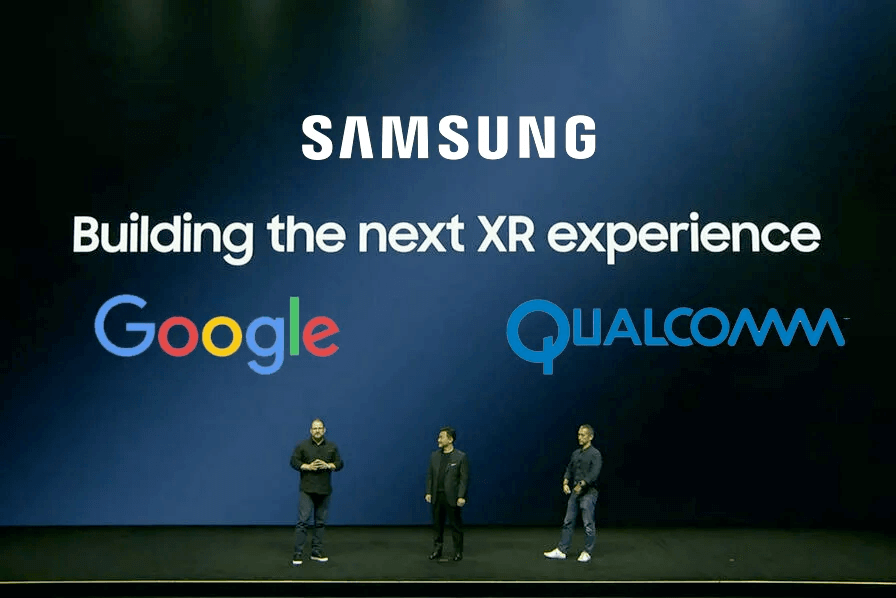
In early 2023, during the Samsung Unpacked Event, an alliance between three major tech giants was announced. This triumvirate comprises Samsung, hardware development expert; Qualcomm, chip manufacturer; and Google, leader in mobile operating systems. These three powerhouses jointly revealed that they have been working on a next generation Spatial Computing device, with an anticipated announcement set for late 2024.
The entrance of these three titans into the Spatial Computing space holds enormous promise. We are likely to witness significant advancements in hardware technology and the introduction of a new Spatial Computing operating system developed by Google. This collaboration is expected to reshape the landscape of the industry and propel it forward.
Lenovo
Lenovo, a brand that has been at the forefront of the enterprise technology sector since acquiring IBM's ThinkPad PC line, has recently made an important entrance into the Spatial Computing arena with its ThinkReality VRX headset. This device is designed to cater to the needs of the enterprise sector, marking Lenovo's commitment to expanding its hardware expertise into emerging technology markets.
This strategic move into spatial computing leverages Lenovo's well-established enterprise market position. With an extensive and robust distribution network already in place, Lenovo has a significant competitive advantage when it comes to distributing the ThinkReality VRX headset. The company is uniquely positioned to capitalize on its existing relationships and distribution channels to effectively reach the enterprise market. This strategic alignment not only amplifies the potential for ThinkReality's success but also reinforces Lenovo's reputation as a corporate hardware leader that evolves with the needs of its customers.
Sony
PlayStation VR stands as a beacon in the realm of high-end virtual reality gaming. While the trend among many users is to shift towards standalone VR headsets with limited rendering power, PlayStation VR 2 is engineered specifically for the PlayStation 5, arguably the most powerful consumer gaming console currently available.
Boasting top-tier graphics, PlayStation VR 2 delivers one of the most immersive virtual reality gaming experiences on the market. Exclusively designed for the PlayStation 5, it ensures that users fully leverage the console's high-end capabilities, offering a gaming experience that is both deeply engaging and visually stunning.
ByteDance
In 2021, ByteDance, the parent company of TikTok, acquired the VR headset manufacturer, PICO, marking its official entry into the spatial computing space. Since this acquisition, PICO has launched its latest spatial computing device, the PICO 4, which stands as a direct competitor to Meta's Quest line. They have also introduced an enterprise-grade model, the PICO 4E, targeting the business market.
Recognized as one of the global technology powerhouses, ByteDance is well-prepared to dominate the Chinese market and pose a strong competition in the worldwide market of Spatial Computing.

The Future of Spatial Computing
Ranging from fitness and healthcare to education and gaming, Spatial Computing is revolutionizing industries with immersive experiences that engage users with technology like never before. The boundaries between the physical and virtual are becoming increasingly blurred, and this is just the beginning.
Looking ahead, the future of Spatial Computing holds immense potential. As these technologies continue to develop, they will play a key role in our everyday lives, transforming the way we live.

Apple's entry into Spatial Computing with the Vision Pro is more than just another product launch; it's a key milestone in the history of technology. With a legacy of redefining consumer technology, the launch of the Apple Vision Pro feels akin to the debut of the iPhone and the Macintosh, signaling the start of a new computing generation.
Having been fully dedicated to developing AR/VR software in the industry since 2016, Treeview has witnessed the industry progress over the last eight years happen in stages. Each new generation of hardware has opened the door to new software use cases, which in turn have paved the way for new business value propositions.
With the launch of this next generation of hardware, led by Meta Quest 3 and Apple Vision Pro, we will see a new wave of startups and corporate innovation teams developing a new set of value propositions with these devices. We can expect a strong next 2-3 years of innovation in this space as entrepreneurs and innovators build the next generation of digital products.

Parting Words
We hope this complete guide on Spatial Computing has been insightful and informative. We've covered in detail what Spatial Computing is, the differences among various industry terms, how the technology works, how it is being used in different industries, and the companies that are leading this space.
The business opportunities in this new industry are endless. Whether you're a startup or an established corporation, if you're looking for a development team, Treeview is here to assist you. As a high-end boutique AR/VR development studio, we've specialized in B2B AR/VR software development services since 2016. Contact us to discuss the project details.
Here's to the future of technology — a future filled with exploration, innovation, and transformation. Until next time!




